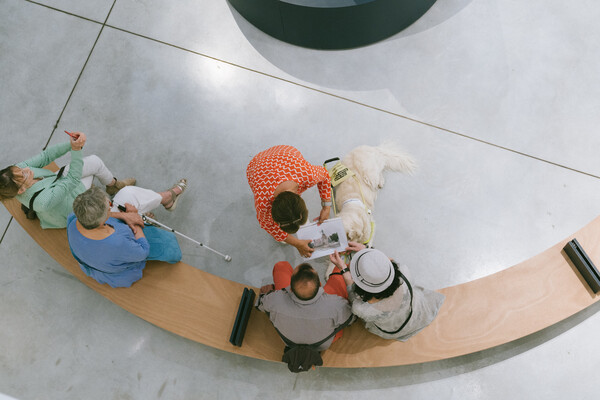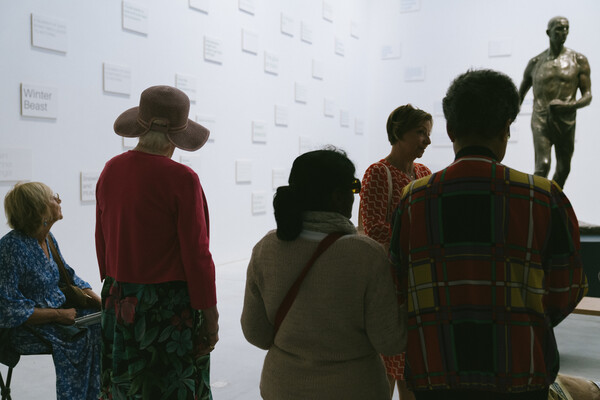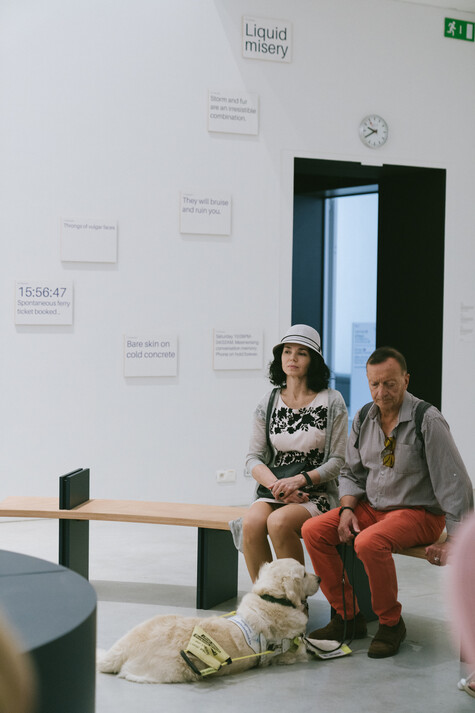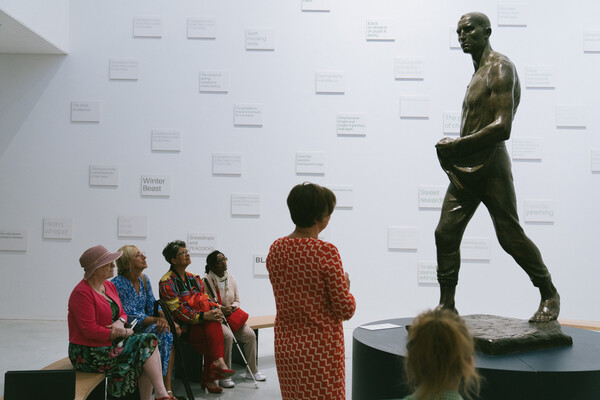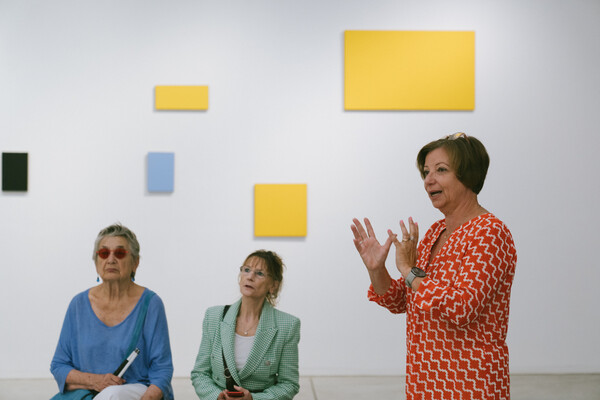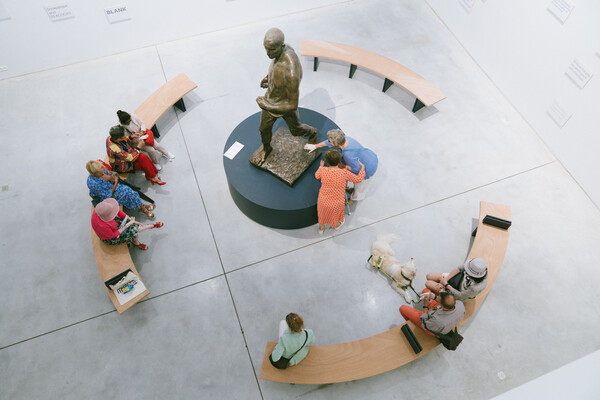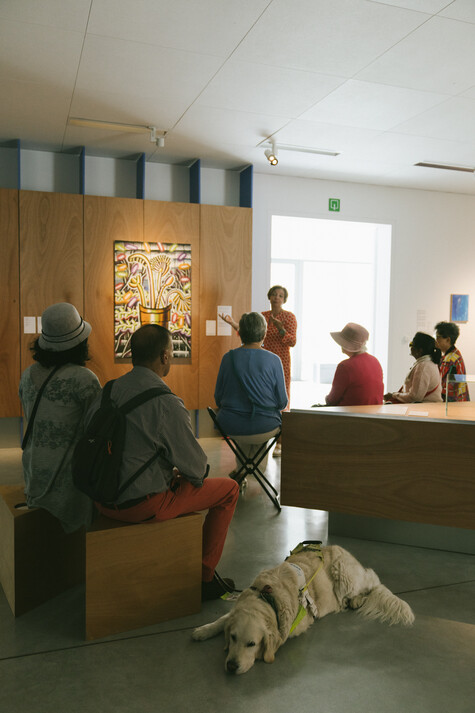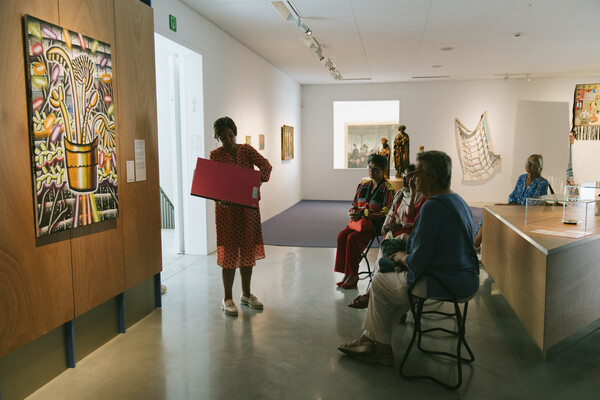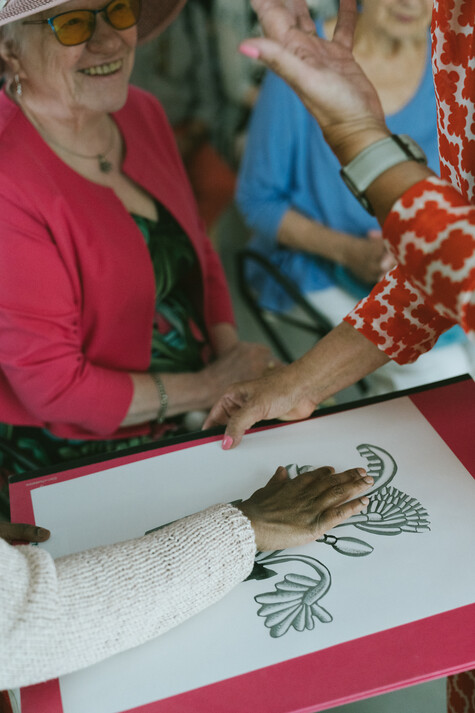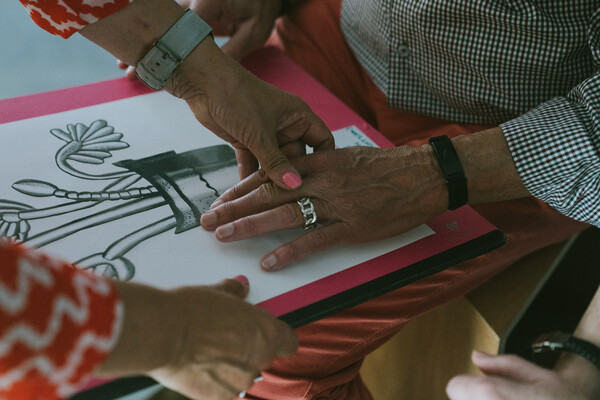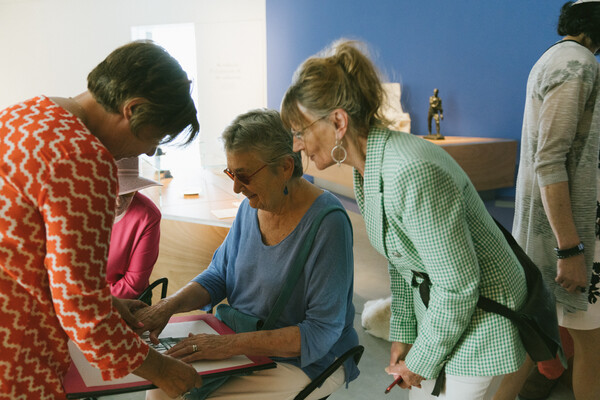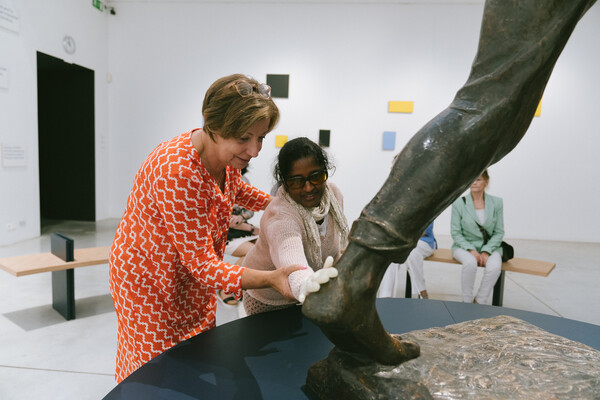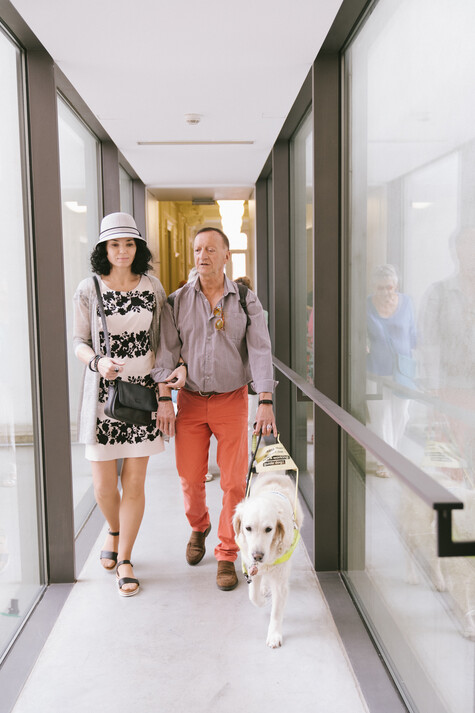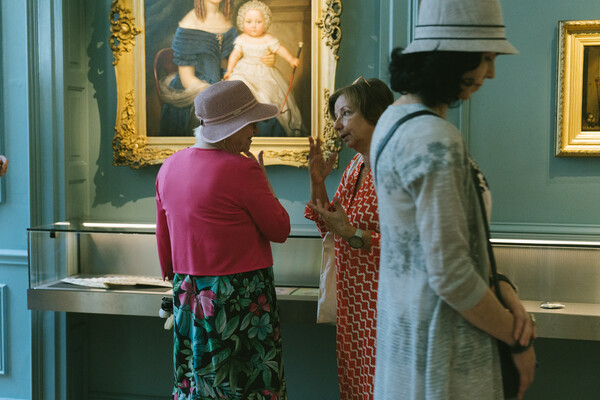About experiencing art with a visual impairment
Gift
The tour itself proved to be a hit with everyone.
Bob: "Every museum should really have this. I could really picture the works."
Marie-José: “Absolutely. The explanations were super good. I also loved that swell paper with the flowers. Anne told us about the rooms and you can tell then that she has a very good feel for blind and visually impaired people. You do pick up things yourself – the first room had a high ceiling, you can hear that immediately from the reverberations – but it still helps if you have a good idea of where you are. That all contributes to a successful tour."
"I also liked that she named the colours of the works. For 'The Sower', for example, she said the plinth is dark blue. Useful, because for me it might just as well be dark grey."
Munia: "For me, the colours are fading. I think that's a shame, but the descriptions today have helped me remember them."
"I often do tours like this, and as far as I am concerned, Anne does an excellent job. She gives you the info you need, and that's what matters. I would advise all visually impaired people to come and try it too."
Anne-Lieze: "Including people who are not visual impaired, by the way. When I say I want to visit a museum, there is always someone willing to guide me. People really enjoy doing that. They learn to see things differently. That's a gift."
More inclusive step-by-step
Charlotte Van Peer is Public Liaison Officer at M and helps ensure that the museum is as accessible as possible. A few years ago, she and colleagues mapped out a route to offer blind and visually impaired visitors the best possible art experience.
Charlotte: "In 2010, so before I started here, M launched a project for people with visual impairment: 'Realm of the senses'. It was a great success, but due to a lack of people and resources, it fizzled out a bit unfortunately. Then, a year or two ago, we picked up the thread. We started by putting together focus groups with blind and visually impaired people. They explored the museum in different ways: with a guide, with an audio guide in which the works were described in detail, alone and in groups... Extensive research that gave us a lot of information. Based on that, we wrote a plan and we are now implementing that plan."
"We trained our guides, the reception staff and the public attendants. We also bought a swell form machine so we can make our own swell papers. In addition, we have started working with tactile objects, and we have been given the okay for blind or visually impaired visitors to touch some of the artworks."
"We will provide a detailed audio description like this of the works for every exhibition with an audio guide, so essentially the major exhibitions. We have added little studs the buttons on our audio guides to make them easy to feel. We have enlarged visitor plans available and we organise entry-level tours for the target group. Making the museum more inclusive and accessible one step at the time: that is what we are all working hard on here.







